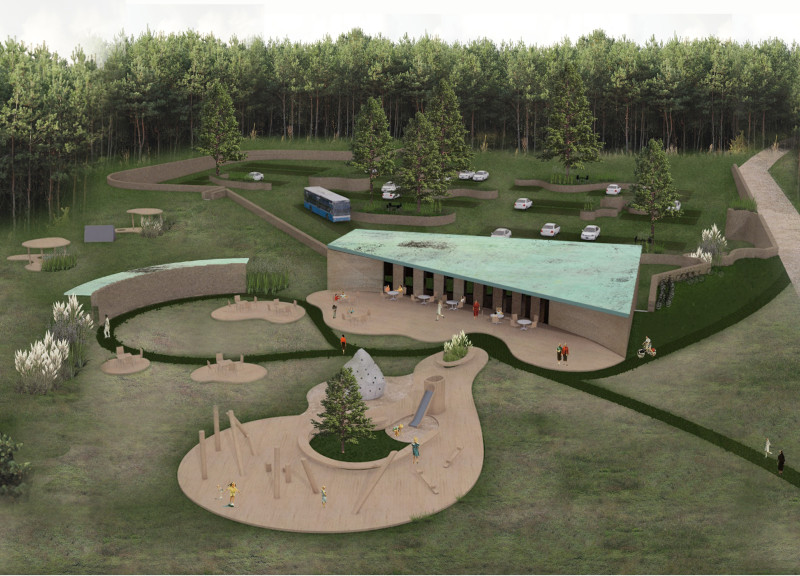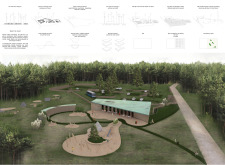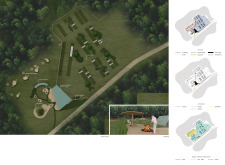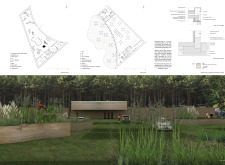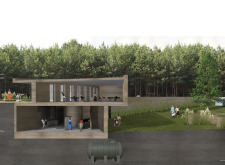5 key facts about this project
This Visitor Center serves multiple functions, including visitor amenities, educational spaces, and recreational areas, all while adhering to environmentally responsible practices. The design employs specific materials and methods that reflect a commitment to eco-friendly architecture and sustainable design solutions.
### Integration with Nature and Unique Materials
One of the primary features of the Visitor Center is its use of rammed earth as the main construction material. This choice enhances thermal performance and aesthetic quality, blending seamlessly with the natural landscape. Rammed earth, made from compacted earth, sand, and clay, connects the building physically and metaphorically to the site. Copper roofing is used to provide durability and visual appeal, evolving in appearance over time to harmonize with the natural setting.
The overall form of the building follows the land's contours, minimizing disruption and allowing for expansive views of the surrounding forest. This organic shape is complemented by the incorporation of local timber and stone in various structural and landscape elements. The design ensures that the building does not overpower the landscape but rather coexists with it.
### Focus on Functionality and User Experience
In addition to its architectural significance, the Visitor Center prioritizes user experience through functional design. The facility includes a café, educational displays, and interactive workshops aimed at fostering environmental awareness and ecological stewardship. By providing diverse amenities, the project caters to various user groups, enhancing community engagement with the natural environment.
The layout promotes exploration and interaction with the landscape, emphasizing not only the building itself but the surroundings. Outdoor spaces for seating, gathering, and play are integrated into the site design, encouraging visitors to connect with nature. The careful landscaping employs native species, contributing to biodiversity and minimizing the need for maintenance.
### Sustainable Practices and Long-term Impact
The integration of sustainable practices is a core aspect of the Visitor Center project. Water management systems, including rainwater harvesting technologies, are designed to utilize natural resources responsibly. The building employs passive design strategies, ensuring energy efficiency and reducing its ecological footprint.
By addressing both functional and environmental concerns, this project stands out among typical visitor centers. Its innovative use of materials, commitment to sustainability, and thoughtful design create a space that not only serves as a functional hub for visitors but also educates and engages them in environmental conservation efforts.
Readers interested in delving further into the architectural vision can explore detailed architectural plans and sections to understand the project's underlying design principles and ideas in greater depth. This project exemplifies how architecture can respond to environmental challenges while supporting community needs.


